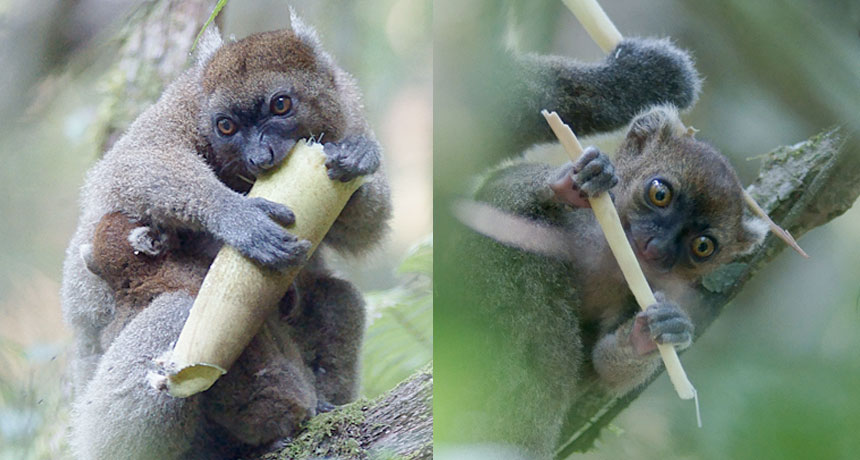Climate change may threaten these bamboo-eating lemurs

The only lemurs so dependent on bamboo that they gnaw on hardened, nutrient-poor stems during the dry season might dwindle away as those seasons grow longer.
Reconstructing the history of the greater bamboo lemur (Prolemur simus) in Madagascar suggests that drier areas over thousands of years already have lost their populations. As the region dries further due to climate change and the bad-bamboo months in the last holdouts lengthen, remaining populations of these critically endangered lemurs might go hungry and fade away too, an international research team warns online October 26 in Current Biology.
Other animals, even another lemur species, will eat lots of bamboo shoots and leaves. But the greater bamboo lemur is the only mammal besides the giant panda that sticks with bamboo during the dry season. That’s when the plants stop sprouting and offer only culm, the tough, old, yellowing stems poor in nutrients. Culm hasn’t reached the hard stage of bamboo that’s used as a building material. “Nobody wants to eat that,” says study coauthor Alistair Evans, an evolutionary morphologist at Monash University in Melbourne, Australia.
This lemur species with its extreme diet had already been feared extinct once, around the middle of the last century, but relic populations turned up. Current survivors remain more toward the eastern part of the island, where dry seasons are apparently survivable, at least for now.